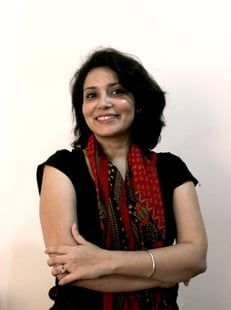

ANIMAFEST PRO | ANIMAFEST SCANNER VI | SIMPOZIJ O SUVREMENOJ ANIMACIJI | ANIMAFEST SCANNER VI - PANEL 4: ANIMACIJA I OBRAZOVANJE
Animirani dokumentarni filmovi: praksa zajedničkog snimanja - Debjani Mukherjee
Animated documentary, judging by the name at first glance may seem an oxymoron, a marriage of opposites where one is rooted in fantasy and the other in reality. Documentary has also been addressed as a discourse of the real, a dialogue between the filmmaker and the audience within the dimensions of awareness, information and education (Jayashankar & Monterio, 2016) and a “creative treatment of actuality” (Grierson, 1933) where the filmmaker attempts to portray “the world rather than a world” (Roe, 2011). Animation, on the other hand, portrays the “art of movement that exists on film alone” (Norman McLaren). While academicians around the world are debating on the techniques, structure, definition, and legitimization of animated documentaries, filmmakers continue to explore the medium as a form of art, expanding the boundaries and challenging the demarcations and definitions. With this context in mind, I define animated documentaries where they stand for the movement of inanimate (non-living) images that portray the perceived reality of the animate (living), in their world outside and within (Debjani 2019). Further, reasoning on legitimizing animated documentary as a non-fiction narrative medium, I introduce ‘collaborative perspective’ of filmmaking where the protagonist participates in the making of the film (to different degrees) and thus incorporating their perspective of their realism, making it a powerful tool of social engagement and protest. In this paper, I share my reasons why choose animated documentary as a social engagement tool with a focus on the pedagogy of community filmmaking. What are its advantages, challenges, ethics, and the audience response?
Debjani Mukherjee is an independent animation filmmaker, researcher and educator. She loves to explore and experiment with stop-motion as her medium for animation and performance. She graduated from National Institute of Design (NID), Ahmedabad, in 2009. Presently she is pursuing a PhD from IDC School of Design, IIT Bombay and her research topic is Indigenous Art Pedagogy. Debjani is a co-founder of BOL, a non-profit based in India, with a vision to engage community children/youth in/with art, training them to create animated documentaries and thus, empowering them to share their own stories through the powerful medium of art. Her research interests include animated documentary, collaborative filmmaking and indigenous art pedagogy. She is currently working on an animated documentary using ‘collaborative perspective’ as a process.


